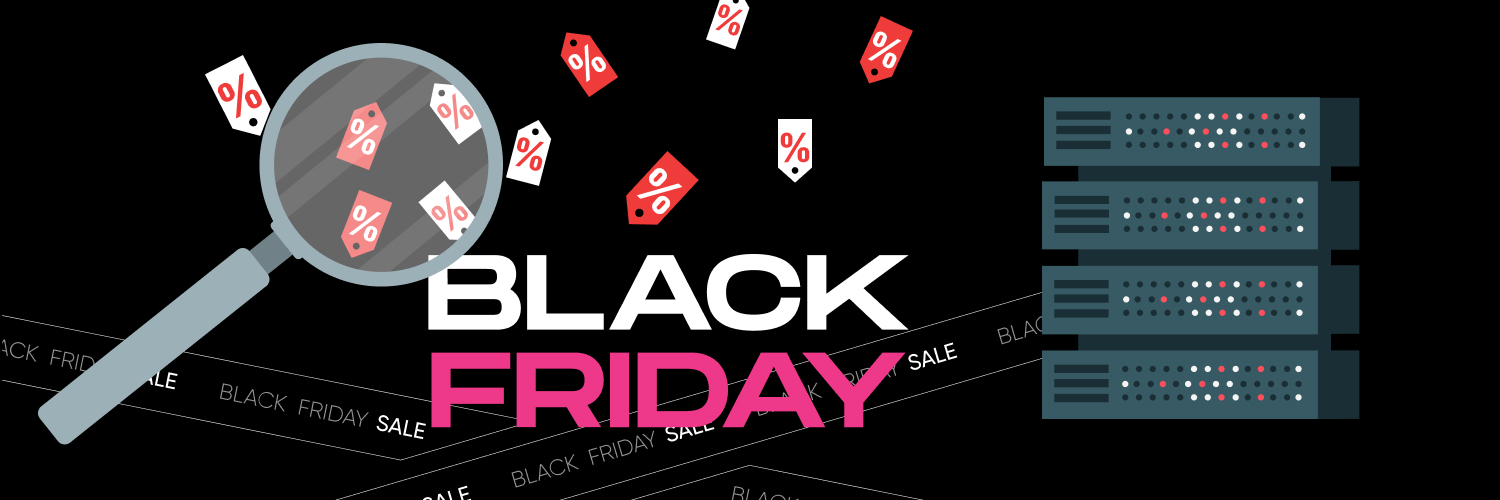Online Brand Protection: How Rotating ISP Proxies Enhance Security
In today’s digital landscape, the importance of online brand protection has never been greater. With the rise of e-commerce and the constant evolution of cyber threats, brands face an array of challenges that can compromise their reputation, customer trust, and bottom line. From brand impersonation to account takeovers, the threats are diverse and increasingly sophisticated, making robust security measures essential for businesses of all sizes.
One effective solution gaining traction in the realm of cybersecurity is the use of rotating ISP proxies. Unlike traditional proxies, which can often be easily detected and blocked, rotating ISP proxies provide a dynamic layer of anonymity and security.
Our Rotating ISPs Are Just Clicks Away!
View our competitive prices and find your ideal proxies – it’s easy to get started 💪

By constantly changing IP addresses, these proxies help businesses navigate the web without leaving a trail that malicious actors can exploit. This capability is crucial for protecting sensitive data and maintaining a brand’s integrity online.
The objective of this blog is to delve into the ways in which rotating ISP proxies enhance online brand security. We will explore their functionality, discuss the various cyber threats they help mitigate and provide best practices for implementation. By the end of this post, you’ll have a clearer understanding of how leveraging this innovative technology can fortify your brand against the ever-evolving landscape of digital threats.
Understanding Online Brand Protection

In an increasingly interconnected world, online brand protection has emerged as a critical component of digital strategy for businesses across all sectors.
At its core, online brand protection involves safeguarding a company’s digital assets — such as its website, social media accounts, and online reputation — against various forms of cyber threats.
As brands navigate the complexities of the digital landscape, the significance of proactive protection measures has become paramount. When you protect a brand online, you don’t just help preserve its reputation. You also ensure the safety of sensitive customer data, maintain trust, and ultimately contribute to long-term profitability.
The threats that brands face online are diverse and evolving, each presenting unique challenges that require targeted responses. Here are some of the most pressing threats that brands need to be aware of.
Brand Impersonation
Brand impersonation occurs when malicious actors create fake websites or social media profiles that mimic a legitimate brand to deceive customers. This can result in financial fraud, where unsuspecting consumers provide personal information or make purchases from counterfeit platforms.
According to the Anti-Phishing Working Group, the number of phishing attacks aimed at impersonating legitimate brands has increased by over 100% in recent years, highlighting the urgent need for robust brand protection strategies.
Account Takeovers
Account takeovers (ATOs) happen when hackers gain unauthorized access to a user’s account, often using stolen credentials obtained through data breaches or phishing attacks. This not only compromises individual accounts but can also lead to broader security issues for brands, including reputational damage and financial losses.
Negative SEO Attacks
Negative SEO attacks involve malicious tactics aimed at undermining a competitor’s search engine rankings. These tactics can include spammy backlinks, content duplication, or hacking the competitor’s site to introduce harmful content. Such attacks can severely damage a brand’s online visibility and reputation.
The Prevalence of Online Threats
The statistics surrounding these threats paint a stark picture of the challenges brands face today. For instance, a study by the Ponemon Institute revealed that the average cost of a data breach is now over $3.86 million, a figure that continues to rise as cyber threats become more sophisticated. Furthermore, Cybercrime Magazine estimates that cybercrime will cost the world $10.5 trillion annually by 2025, illustrating the urgent need for brands to invest in effective online protection strategies.
The ongoing proliferation of digital threats makes it clear that brand protection online is no longer optional; it’s a necessity. Companies that fail to prioritize their digital security risk not only their financial stability but also their reputation and customer trust.
By understanding the various threats they face and the significance of protecting their brand online, businesses can take informed steps to safeguard their assets and build a resilient digital presence.
In this context, leveraging advanced technologies such as rotating ISP proxies can play a crucial role in enhancing brand security, making it imperative for organizations to explore these solutions as part of their comprehensive online protection strategies.
What Are Rotating ISP Proxies?

To fully grasp the significance of rotating ISP proxies in the realm of online brand protection, it’s essential to first understand what ISP proxies are and how they operate.
Defining ISP Proxies
ISP proxies, or Internet Service Provider proxies, are intermediary servers that route your Internet traffic through an IP address assigned by an Internet Service Provider. This type of proxy allows users to mask their original IP address while accessing websites, providing an additional layer of privacy and security.
Unlike residential proxies, which use IP addresses tied to residential devices, ISP proxies utilize IPs from genuine ISPs, giving them a more legitimate appearance in the eyes of websites and online services.
For more information, we have a wider guide on “what is an ISP proxy“.
The Concept of Rotation
The concept of rotation in proxies refers to the ability to change IP addresses frequently and automatically during a session. This feature is particularly beneficial for businesses that need to perform numerous requests to various websites without attracting attention or triggering security mechanisms.
By continuously rotating the IP address from which requests are sent, users can maintain anonymity and avoid rate limiting, bot detection, or IP bans that might arise from excessive requests from a single IP.
How Rotating ISP Proxies Differ from Traditional Proxies
Traditional proxies, while effective in masking IP addresses, often come with limitations. They can be either data center proxies, which are generated from cloud data centers and can be easily identified as non-residential, or residential proxies, which are tied to actual devices. However, both types can lead to detection if the same IP address is used for repeated requests.
Rotating ISP proxies, on the other hand, provide the best of both worlds. They combine the legitimacy of residential IPs with the functionality of traditional proxies. This means they can effectively bypass restrictions and detection systems while maintaining a consistent level of performance. Their rotating nature further enhances security and anonymity, making them a superior choice for businesses engaged in activities such as web scraping, competitive analysis, or market research.
Technical Workings of Rotating Proxies
To understand how rotating ISP proxies function, let’s delve into the technical aspects:
IP Rotation Process
The IP rotation process involves dynamically changing the IP address assigned to a user’s session.
When a request is made, the proxy server automatically assigns a new IP address from its pool of available addresses. This could happen after a predetermined period or after a certain number of requests.
The goal is to ensure that no single IP address is overused, thereby minimizing the risk of detection and blocking by the target website.
Types of Rotation
There are primarily two types of rotation mechanisms for proxies:
- Time-Based Rotation: This method rotates the IP address at regular time intervals. For instance, an organization may configure its proxy settings to change the IP address every minute or after every ten minutes. This method is particularly useful for long-running tasks where the user wants to maintain a high degree of anonymity without drawing attention.
- Request-Based Rotation: In this approach, the IP address changes after a specific number of requests have been made. For example, if a user is conducting a web scraping operation, they might set the proxy to rotate the IP address after every 100 requests. This helps spread the requests across multiple IPs, further reducing the likelihood of them being flagged as bots.
Benefits of Using ISP Proxies
Utilizing ISP proxies, especially those that incorporate rotation, offers a multitude of benefits:
- Reliability: ISP proxies are known for their stable performance. Since they use real IP addresses from legitimate ISPs, they are less likely to be flagged or banned by target websites compared to data center proxies. This reliability is crucial for businesses that depend on consistent access to data.
- Anonymity: By rotating IP addresses, users can maintain a high level of anonymity. This is particularly important for businesses that need to conduct competitive research or monitor market trends without revealing their identity or intentions. The less a website can identify you as a bot or competitor, the more seamless your data collection can be.
- Reduced Risk of Blocking: Frequent IP rotation minimizes the risk of getting blocked or banned by target websites. Many websites have strict anti-bot measures in place, but rotating proxies can help evade these mechanisms, allowing users to conduct extensive scraping or data gathering without interruption.
- Access to Geo-Restricted Content: Rotating ISP proxies also allow users to access content that may be restricted based on geographical location. By utilizing IP addresses from different regions, businesses can gather localized data or test how their website appears to users in various areas.
Sounds Good, Right?
View our competitive prices and find your ideal proxies – it’s easy to get started 💪

How Rotating ISP Proxies Enhance Security

In the ever-evolving digital landscape, brands face a multitude of security challenges. Rotating ISP proxies have emerged as a crucial tool for enhancing online brand protection by addressing these challenges effectively. Here, we explore specific ways in which rotating ISP proxies bolster security and offer businesses a strategic advantage.
Mitigation of Account Takeovers
Account takeovers (ATOs) represent another severe threat in the digital landscape. Cybercriminals often utilize stolen credentials obtained through phishing or data breaches to gain unauthorized access to user accounts. Once inside, they can manipulate account settings, access sensitive information, or even make fraudulent purchases.
Frequent IP changes enabled by rotating ISP proxies can serve as a deterrent to unauthorized access attempts.
When a legitimate user accesses their account, the proxy can rotate their IP address, which complicates the detection of suspicious behavior by security systems. If an attacker tries to access an account from a different IP address, security protocols can trigger alerts or additional authentication measures, thwarting the attack.
For instance, if a hacker attempts to log in from an unfamiliar IP while the legitimate user’s account is accessed via a rotating proxy service, the system may require additional verification, thus protecting the account from takeover.
Avoiding Geo-Restrictions and Blocking
Many brands operate globally and need to gather information or perform operations in various regions. However, many websites implement geo-restrictions, blocking access based on the user’s location. This can severely limit a brand’s ability to conduct market research, analyze competitor strategies, or manage digital advertising.
Rotating ISP proxies allow brands to bypass these geo-restrictions effortlessly.
By utilizing IP addresses from various geographic locations, businesses can appear as if they are accessing the web from those specific regions. This capability enables brands to gather localized data without being blocked or restricted.
For example, a company wanting to analyze pricing strategies in different countries can seamlessly gather information without triggering geo-blocking mechanisms, ultimately enhancing its competitive edge.
Reducing Fingerprinting Risks
Browser fingerprinting is a technique used by websites to identify and track users based on their device characteristics and browsing behavior. This method can be employed to detect bots and restrict access to genuine users. Each time a user visits a site, their device attributes—like screen resolution, installed plugins, and user-agent string—are analyzed to create a unique fingerprint.
Rotating ISP proxies help mitigate these risks by frequently changing the IP address and making it harder to establish a consistent fingerprint.
When combined with other techniques, such as using different user-agent strings or browsers, rotating proxies can effectively obscure a user’s true identity. For instance, a user engaged in web scraping or market research can switch both their IP and browser configurations, significantly lowering the chances of being detected as a bot.
Best Practices for Using Rotating ISP Proxies

Implementing rotating ISP proxies can significantly enhance your brand’s online security, but to maximize their effectiveness, it’s crucial to follow best practices. Here, we outline actionable tips for businesses looking to integrate these proxies into their operations successfully.
Choosing a Reputable Provider
The first step in leveraging rotating ISP proxies is to choose a reliable and reputable provider. A trusted provider, like Rayobyte, offers several advantages, including:
- Quality IP Addresses: Ensure that the provider supplies high-quality, clean IP addresses that have not been flagged or blacklisted by websites. This will minimize the risk of encountering blocks or bans.
- Extensive IP Pool: Look for a provider that offers a large and diverse IP pool. This diversity allows for effective rotation and reduces the likelihood of being detected as a bot.
- Customer Support: Opt for a provider with responsive customer support. Should any issues arise, having a team ready to assist can save time and prevent operational disruptions.
- Transparency: A reputable provider will offer precise information about their services, pricing, and the technologies they use. This transparency builds trust and helps you make informed decisions.
Integrating Proxies into Existing Security Protocols
Once you’ve chosen a provider, the next step is to integrate rotating ISP proxies into your existing security protocols. Here are some practical tips for a seamless integration:
- Evaluate Current Security Measures: Before adding proxies, assess your existing security infrastructure. Identify areas where rotating proxies can enhance your protection, such as account security.
- API Integration: If you’re using proxies for web scraping or data collection, consider integrating the proxy provider’s API with your systems. This integration can streamline the process of rotating IPs and enhance overall efficiency.
- Authentication and Encryption: Ensure that any connections made through the proxies are secure. Use HTTPS for encryption and consider additional authentication methods to enhance security further.
- Regular Updates: Stay updated on the latest security protocols and best practices. Cyber threats evolve rapidly, and your security measures should adapt accordingly.
Regularly Monitoring Proxy Performance and Security Logs
Monitoring is a critical aspect of effectively using rotating ISP proxies. Regularly reviewing performance and security logs helps ensure that your proxies are functioning optimally and that any potential issues are addressed promptly:
- Performance Metrics: Track key performance indicators such as response times, request success rates, and the number of blocked requests. Analyzing this data can help you identify patterns or issues that need to be resolved.
- Security Alerts: Set up alerts for any suspicious activity related to your proxies. This could include sudden spikes in traffic from a single IP, repeated access attempts, or login failures.
- Adjustments Based on Insights: Use the insights gained from monitoring to make necessary adjustments. For instance, if you notice that certain IPs are being blocked frequently, consider rotating them out of your pool.
Importance of User Education and Awareness
While implementing technology is crucial, user education plays a vital role in the successful use of rotating ISP proxies. Ensure that your team is well-informed about the benefits and best practices associated with these proxies:
- Training Sessions: Conduct regular training sessions for employees who will be using the proxies. Cover topics such as the importance of anonymity, the proper use of proxies, and how to identify potential security threats.
- Creating Awareness: Foster a culture of security awareness within your organization. Encourage employees to report any suspicious activity they encounter, whether related to proxy usage or other aspects of cybersecurity.
- Documentation: Provide clear documentation on how to use the proxies effectively. This should include step-by-step guides, troubleshooting tips, and contact information for support.
- Encouraging Best Practices: Promote best practices among users, such as avoiding public Wi-Fi networks when accessing sensitive data and regularly updating passwords for any accounts associated with proxy use.
How Do I Set Up Rotating ISP Proxies for My Business?

Setting up rotating ISP proxies for your business involves several steps to ensure proper integration and optimal performance. After you’ve chosen a reputable proxy provider, follow these guidelines to get started:
Create an Account
Sign up for an account with your chosen provider. This typically involves:
- Providing basic information (email, company name, etc.).
- Selecting a pricing plan that meets your needs based on the expected usage and the number of IPs.
Configure Your Proxy Settings
Once your account is set up, you’ll need to configure the proxy settings:
- Access the Dashboard: Log in to your provider’s dashboard to manage your proxies.
- Select Rotation Options: Choose between time-based or request-based rotation, depending on your specific use case.
- Obtain Proxy Details: Get the necessary proxy details, including IP addresses, port numbers, and authentication information (username and password, if applicable).
Integrate Proxies into Your Applications
Depending on your business needs, integrate the rotating proxies into your existing applications or workflows:
- For Web Scraping: If using a scraping tool, configure it to use the rotating proxies by inputting the proxy details into the tool’s settings.
- API Integration: If available, use the provider’s API for more advanced integrations, allowing for seamless rotation and management of proxies within your software.
Test the Setup
Before fully deploying your proxies, conduct a series of tests to ensure they work as intended:
- Connection Test: Verify that you can connect to websites using the rotating proxies without issues.
- IP Rotation Check: Monitor whether the IPs are changing according to the configured settings (time-based or request-based).
Monitor Performance
Once the proxies are operational, regularly monitor their performance:
- Log Performance Metrics: Keep track of response times, error rates, and any blocked requests to identify potential issues.
- Adjust Rotation Frequency: Based on your monitoring, you may need to adjust how often IPs rotate to optimize performance and avoid detection.
Implement Security Protocols
Ensure that your usage of rotating ISP proxies complies with best security practices:
- Use HTTPS: Always access sites through secure connections to protect data.
- Regularly Review Logs: Monitor logs for any suspicious activity or access attempts.
Educate Your Team
Provide training to your team on how to effectively use a rotating ISP proxy service:
- Share guidelines on when and how to use rotating proxies.
- Discuss the importance of compliance with the provider’s terms of service.
Learn More About Rotating ISP Proxies Today

Proactive measures are essential for preserving a brand’s reputation and ensuring customer trust. As cyber threats continue to evolve, relying on advanced technologies like rotating ISP proxies is not just a precaution; it’s a necessity for effective online defense.
If you’re ready to take the next step in enhancing your brand’s security, consider Rayobyte’s rotating ISP proxy solutions. With a reputable provider, seamless integration into your existing systems, and comprehensive support, you can empower your business to navigate the digital landscape with confidence.
Protect your brand and your customers. Explore Rayobyte’s offerings today!
Our Rotating ISPs Are Just Clicks Away!
View our competitive prices and find your ideal proxies – it’s easy to get started 💪

The information contained within this article, including information posted by official staff, guest-submitted material, message board postings, or other third-party material is presented solely for the purposes of education and furtherance of the knowledge of the reader. All trademarks used in this publication are hereby acknowledged as the property of their respective owners.



